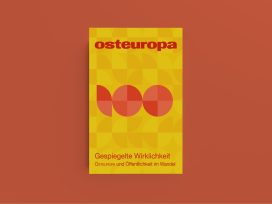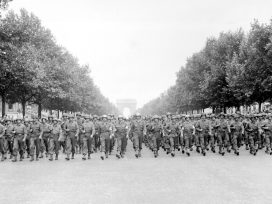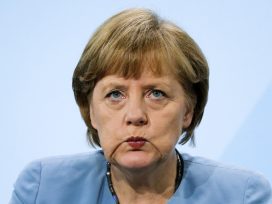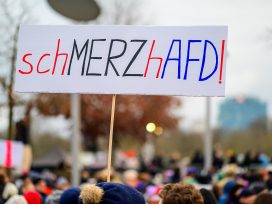What are generations?
The discourse about generations was started and shaped by sociologist Karl Mannheim with an influential essay in 1928. Some of his questions were: What transforms age cohorts into generations? What binds them together? How do they distinguish themselves from other generations? Some generations are retrospective constructs by historians who are interested in collective experience and use them for the purpose of periodization. The term ‘baby-boomer’, for instance, is an American label for a demographically strong cohort born in the 1940s and 50s during and after the Second World War. It is clearly a descriptive label for a generation that does not capture a collective self-image, let alone a publicly visible movement. In this way the term differs strikingly from the label ‘1968’ which refers in Europe to roughly the same age-group, but conveys much more the meaning of a collective historical experience and commitment. There are also generations that are distinguished by numbers; they are counted according to a decisive event, a point of origin and reference marking the start of a new history, such as a war, genocide or, within the frame of an individual family, the act of immigration.
Generations are certainly never homogeneous, and differ from intellectual trends, artistic movements or political parties. A generation is formed by a smaller or greater number of individuals who create the style and image for the group whom they aim to represent, but encompass a great number of members who remain detached, indifferent and inconspicuous. Generational affiliation is not a matter of choice, nor can it be changed; it remains with us throughout our life-span. Karl Mannheim studied generations within the frame of modernization theory. Modernization theory is interested in the questions ‘What drives history?’ and ‘What promotes change, innovation, and progress?’ His answer was: generations! According to Mannheim, generations accelerate history by initiating developments and pushing society in new directions. He considered generations to be important agents of change because they share a historical moment and represent a youth that is much more open, flexible, curious and impressionable than other age groups in society. For this reason, the study of generations is usually confined to a short temporal window of opportunity that is closed when the cohort enters middle age and disappears into the boring mainstream of society.
I want to add three points to this general discourse on generations that will enter into my discussion on the impact of the ‘68 generation.
My first point is that generations are in no way homogeneous, because they are shaped by historical, national, political, cultural and local circumstances.
My second point is that a generation is not only shaped by circumstances that define its specific range of possibilities and options; it also shapes itself by being exposed to and opening itself up to pressing problems, moral issues and crises for which it has to find new answers. This answer can become what I want to call the generation’s ‘historical project’.
My third point is that a generation is defined not only by its youth but also by its whole life-span, including maturity, middle age, and age. This means that generations cannot fully be captured by a single year or event. I want to argue that in Germany, the ’68 generation peaked not only in the late 1960s, when this age cohort was in their twenties, but also – and this has not yet received due attention – in the 1980s, when they were in their forties. Each phase, I argue, was defined by a different ‘generational project’ but they clearly complement each other and are connected within the individual biographies of this particular generation.
The canonization of the 1968 generation
It is a paradoxical law of anniversaries and commemoration dates that growing historical distance brings us closer to the events of the past. This calendar is organized by numbers. The most meaningful and efficient number to agitate our historical sense is the zero. 1914 / 2014: After 100 years the Great War that had been almost completely forgotten in countries like Germany, Austria or Russia, returned with full force. Historical anniversaries cut out a piece of the past to bring it back into the present, in order to stage, re-inspect, discuss and assess it. They open a clearly defined window of opportunity for historical reflection. This magic is exhausted as soon as the specific combination of numbers is changed. Commemorative practices are important for the self-understanding and self-image of a society. In the medium of such re-inspections a society confirms central turning points of its history and critically probes the impact of significant events. Anniversaries also underline the fact that there is no closure to the evaluation of history, as each present enters into a new encounter with the past.
This is also true for the anniversaries of the ‘68 generation in Germany. After 40 years, in 2008, the assessment of the impact of the ‘68 generation was still rather self-critical. In retrospect, some of the former protagonists distanced themselves from the authoritarian gesture of their youthful revolt. Ten years later in 2018, the evaluation is proving to be much more positive and full of nostalgia. Fifty years after the seminal events in Berlin, Paris and Woodstock, we can register the canonization of this transnational generation which seems to represent everything that today we are sadly lacking: a vision for the future, a mobilizing grassroots movement, a liberation from apathy and repressive traditions, a renewal of the critical spirit. After the financial crisis, the Syrian War and the experience of mass migration, the consensus about European values is at stake. In this situation the ‘68 revolt speaks to us in a new way: it is charged with new meaning as a usable past for the EU. Under the recent pressure of a dissolution of a democratic consensus, the legacy of the ‘68 generation is becoming more and more important. It is now generally agreed that after the founding of the German state in 1949, it was this generation that has laid the foundation of a modern democratic society in 1968.
The year 1968 has indeed become a symbol. Like all symbols, it is saturated with emotions, concepts, memories and associations, but it is not very precise. In Germany the defining moment for the formation of this generation happened in 1967 in Berlin on June 2 when the student Benno Ohnesorg was murdered by a policeman during demonstrations against the presence of the Shah of Iran. Rudi Dutschke, the charismatic leader of this generation, was hit by bullets in Berlin on 11 April 1968. Two other European events followed shortly: the first were the international students’ demonstrations one month later in Paris, which clearly marked the peak of a left European students’ revolt, and four months later the Czechoslovak student demonstrations in Prague which culminated (in early 1969) with the death of Jan Palach and other students. While in the May events in Paris students were protesting against structures of inequality in a democratic state, in August 1968 the students were part of the movement of the Prague Spring, protesting against an illiberal communist regime and occupation. The May events in Paris and the August events in Prague both happened in 1968, but are very difficult to subsume under one label. They clearly reflect the divide between West and East during the cold war. But from a more general point of view they converged, as democratic ideas of the West went East, so to speak, and communist ideas of the East went West.

Students of the Christian-Albrechts University (CAU) protest against the death of their fellow student Benno Ohnesorg. Berlin 5 June 1967. Source: Wiki Commons
There is so much that we admire and ascribe today to the ‘68 generation: they have transformed our lifestyle, they have democratized the society, they have reformed the institutions, and they have broken with the Nazi past. This is quite a workload for young people aged between 18 and 28. After 50 years, we are no longer dealing with the history of this generation but with the myth that has been created around it. 1968 has become a universal symbol that is invoked to talk about our present situation. It synthesizes many revolts, political movements and social changes of the late sixties. In its most general sense, 1968 today stands for a shift in the Cold War era from a traditional to a modern society, emphasizing the liberation from repressive bourgeois traditions, the fight for political equality, the celebration of pop culture including Beat and Jazz, Hippie and Flower Power movements, a new concept of the gendered body and drugs, gender emancipation, postcolonial politics, peace movements and ecological awareness – all of this framed by new mass media such as records, radio, films, and (colour) television programmes. Before the ‘68 generation decided to liberate itself and the world, it had already been liberated to a large extent.
As it grew more ideological and political, however, the concept of liberation changed from forms of peaceful protest, such as the civil rights movement in the USA, to more militant interventions that required a new language and ideology and did not disbar the option of violence. The motto of youth protest clearly changed during the 1960s. It started with ‘We shall overcome!’ and ended with: ‘Proletarians of all countries, unite to fight against global capitalism!’
This turn from civil aims and liberal values towards a more radical left political programme went hand in hand with sympathies for autocratic regimes and blind spots for dictatorial practices. East Germany (the GDR) did not have space for a ’68 movement for two reasons: first, because it would not tolerate manifestations of youth protest; and second, in the GDR there was nothing to protest about because the aims of the youth protest had already been fulfilled by the government itself. This at least was the ideal of those radical leftists of West Germany who had their loyalties in East Germany and were supported by its state. For the same reason they had little sympathy for the democratic developments of the Prague Spring. The 21 August 1968 invasion by Soviet tanks to crush the movement of their fellow students did not make a deep impression on West German students. This event did not fit into the script that they had internalized, locating the source of all evil in Western capitalism and the source of all good in Eastern communism. For a fighting generation, there was little room for ambivalence, puzzlement, empathy and dismay.
The German version of 1968
When we talk about 1968, we should not only talk about a universal symbol but also about the specific historical and political contexts of different ‘68 generations. I will focus here on the German situation and start with a longer historical perspective.
This ‘68 generation did not pop up out of the blue but had a longer historical legacy. In a historical perspective, German culture is part of the framework of western modernization that is based on change, innovation and progress. In this context, youth protest has been acknowledged as an important factor of innovation. As modernization was linked to the continuous breaking of traditions, the young were expected to fulfil precisely this task. Historians tell us that this cultural script was first introduced in Germany in the period of Enlightenment at the end of the 18th century, which is defined as the beginning of the modern era (Sattelzeit). The first historical youth protest was embodied by the generation of Sturm und Drang (storm and pressure) in the 1770s and involved many canonized authors like Goethe and Schiller. Storm and pressure as an expression of youth revolt became cultural norms that were written into the script of each new generation. There were authoritarian periods in German history like the Second Empire, in which this cultural programme was played down and bracketed, and others, like the ‘Third Reich’, in which it was blatantly abused. But after the Second World War – and the total victory over Nazi Germany, the demise of its ideology and the rebuilding of a democratic state with the help of the allies – there was a period in which the modernist cultural programme of revolt met in West Germany with unique historical conditions and gained explosive traction.
The transition of the political framework of a state from dictatorship to democracy can be achieved in a short period of time, but it takes decades and generations to transform a whole society. The first generation to appear on the stage of history after 1945 was not the ’68 generation but that of ‘45ers. It is therefore important to briefly look at the first youth generation after 1945 to better understand the specific position of the ‘68 generation. The ‘45ers, as they are called by Dirk Moses, were born between 1926 and 1928 and had been heavily indoctrinated by the Nazi state from early on. At the age of 15 they were taken out of school and sent directly into the war to operate air defence batteries. If they survived war and imprisonment, they returned to school to finish their interrupted education. After school, they were the first generation to start their professional training and university education in a democratic country, but – given the teachers around them, most of whom were former Nazis – not in a democratic environment. Modernization in the sense of ‘breaking with traditions’ was much easier for this youth generation than for their fathers and mothers who had been heavily involved in the Nazi State. While after 1945 the older generation considered themselves first and foremost as defeated and humiliated, for the ‘45ers, the term ‘liberation’ had quite another ring. It meant: liberated to pursue a new chance and a new life. It therefore became the generational project of this first post-war youth generation to embrace the standards of re-education that were haughtily rejected by their elders and to invest themselves wholeheartedly in the process of democratization. I want to argue that it was this first youth generation that proved to be the effective medium to accept liberation and democracy as a gift from the allies and to put it into practice in German post-war society. This generation eagerly embraced the new future, but, as they also shared the negative legacy of the Nazi past, they turned their backs on the past and their former lives, supporting the general ‘pact of silence’ that pervaded the cultural climate of post-war Germany during the first four decades.
I have introduced the ‘45 generation for two reasons. The first is that the democratization of German society was not the project of the ‘68 generation. This was the project of the previous generation who embraced this task with the full knowledge and experience of what it means to have lived in a dictatorship. The ‘68 generation differed from the ‘45er in that it was not actively involved in the war and therefore did not feel complicit with their fathers and uncles. On the contrary: it became the ‘68 generational project to break the pact of silence. They stood for a fresh start and turned the whole force of their protest against the older generation, creating a clash between ‘old’ and ‘young’, ‘guilty’ and ‘innocent’. In confronting their parents at home, they made their private revolt public and their public revolt private. Turning against their home and origin they had the courage to ask uncomfortable questions and to initiate radical change. Their courage was underpinned by rage, which is an explosive mixture that can become the fuel for a revolt if not for a revolution. In Germany, the protesting students broke the repressive silence, turning against their parents, their teachers, their society and their state.
Here is an anecdote that shows how, for this generation, referencing the Nazi past became a tool in a political struggle. At the University of Bonn, a couple of students from the militant student organization SDS had a date with the rector. When they arrived, the rector was still absent. The secretary led the group into his office, where the students started to smoke the rector’s cigars and leafed through the official guestbook of the university. Here they found an entry by President Heinrich Lübke (in office from 1959-1969). Under the signature of the president, they inserted ‘builder of concentration camps’. As a consequence of this episode, the rector decided to expel the students from the university. Some of these students were historians, however. They checked the name of the university lawyer that had signed the document and went to an historical archive, where they found his Nazi Party file, of which they sent a copy to the rector. The next steps in the story were the re-admission of the students and the dismissal of the lawyer from the university.
The second project of the ‘68 generation
Breaking the silence and exposing the Nazi past in Germany was one thing, but working through the past and acknowledging the victims of the genocide was another. This latter aspect was not the focus of the protesting youths of ‘68. The heroes of this generation were Marx and Lenin, Che Guevara and Ho Chi Minh. It was not Fritz Bauer, attorney general and prosecutor who organized the Auschwitz trials in Frankfurt from 1963-65. At that time, Bauer worked very much in isolation and suffered from the repressive climate which silenced the Nazi past, while the young generation pursued other projects, such as mobilizing for a global battle against imperialism and fascism.
The interest in the past came 20 years later, when the ‘68 generation were moving into jobs and raising families. Taking over responsibility in society changed their attitude. It was in this context that this generation found a new project which consisted not only of breaking the silence by condemning their parents, but in opening up new approaches to the Nazi past. We may characterize this approach as ‘internalizing’, to use the phraseology of sociologist Rainer Lepsius. The pact of silence had been sustained by ‘externalizing’, meaning that blame and guilt for the monstrous crimes was always attributed to others: a small criminal group, or Hitler himself. Internalizing, on the other hand, meant that the second generation was taking on responsibility for dealing with the Nazi crimes that the older generation had circumvented. The sons and daughters accepted and embraced what their parents had dismissed and negated. In doing so they became the founders of what is today called ‘German memory culture’. It consists in breaking the silence by asking very concrete questions such as: Which Jewish families were deported from this city? Which Jewish professors, salesmen, artists were kicked out of universities, firms, shops, theatres? Where did they die? Did any of them survive? Do they have children or relatives that can be invited to the city in which their grandfathers and grandmothers once lived and suffered? Working through this past turned out to be a life-long process that continues to this day, with questions such as: who took over the buildings, apartments and possessions of these former owners? After having broken the silence, it became the project of this generation to recover this history from forgetting by exposing the crimes, by marking as historical sites the murderous network of the perpetrators, and by recovering – as far as possible – the traces, names and stories of the victims.
The ‘68 generation was by no means homogeneous; it continued after 1968 in different directions – some members became radicalized and turned criminal, others made a career and become politicians. But their impact did not end with the protest movement of their youth; it found a new focus in a second project. Twenty or thirty years later the members of this generation built up a self-critical memory culture that was historically new because it did not extoll the heroic deeds of the nation but exposed its most horrendous crimes. ‘Crimes of the Wehrmacht’ was the title of an exhibition on the war of annihilation and the Holocaust that toured many German cities between 1995 and 2003. It was designed by Hannes Heer, the same student who told me the anecdote about the students’ visit to their rector’s office in Bonn. In this exhibition, a section was dedicated to the massacre at Babi Yar, where on 29 and 30 September 1941, 10 days after the arrival of the German Wehrmacht in Kyiv, special Nazi units murdered the entire Jewish population of Kyiv, namely 33,771 men, women and children who were unable to flee. It was the first time that this crime was presented in public in many German cities, and forms of collaboration between SS-units and the German army were discussed in families, in the streets and in the media. The exhibition had a strong emotional impact and a symbolic meaning; it was a clear step towards ‘internalizing’ these crimes and taking responsibility for them as part of German history.
In another form, the writer Katja Petrowskaja, born in 1970 in Kyiv, has recently brought this event back to Germany. By using the German language for her family memoir, which she published in 2014, she ‘translated’ her fragile web of memorial links and traces from a Ukrainian and Russian audience to a German readership. In the centre of the book, she imagines her father’s babushka, her great-grandmother, perhaps called Esther, describing in slow motion, because ‘perhaps Esther’ is no longer able to move and to escape, how she falls prey to German murderers and lies buried, together with other family members, in the mass grave of Babi Yar. ‘There they were shot’, Petrowskaja writes, and from her new position in Berlin, she suddenly and unexpectedly addresses her German readers. With the following words she brings the event into the present and back to her German readers’ historical consciousness: ‘But I’m sure that you know this. Kyiv is just as far from here as Paris.’
1968 and Europe in 2018
So what is the legacy of 1968? We certainly want to continue the critical spirit of ‘68 that has not disappeared because it is irreversible. We also want to continue the commitment of this generation, their sense of urgency and dedication. But we cannot learn from the past if we only idolize it. There are three points that I want to conclude with.
- The critical spirit has to include self-criticism. This can start with re-assessing a leading concept of ’68, which is ‘liberation’. This is certainly what this generation stood for: liberation from social repression, paralyzing traditions and outdated gender roles and lifestyles. If connected to an authoritarian ideology, however, liberation itself can run the danger of becoming itself violent and illiberal. In other words, we can no longer admire and perpetuate ‘68ers anti-democratic affects. It is important to see that the new right is doing exactly that. In Prague, for instance, former dissidents who had opposed Soviet violence, are now turning against Europe to protect their nation against external influences.
- The spirit of 1968 was transnational; it linked many cites and connected dissident youth on both sides of the Atlantic in their imagining and fighting for a more equal society. This movement, however, happened under the constraints of the Cold War and was deformed by it. By pitting capitalism against communism, it deepened the divide between East and West. The EU today is the result of two collapses: of German fascism in 1945 and of the Soviet Union in 1989. When constructing a genealogy of this new Europe, we need to bridge the divide of the Cold War and move forward to further movements and moments of liberation in a democratic spirit. This legacy of the EU includes the Prague Spring of 1968, the Solidarity workers in Poland in 1980, the peaceful revolution in East German cities in 1989 and the Euromaidan Protests in Kyiv in 2014.
- As we admire today the spirit and mobilizing power of a generation that changed the world in the late sixties, we may ask: What is the mobilizing power of the EU today that can speak to the whole of society at a time of new wars, re-erected frontiers and growing nationalism? In her memoir Perhaps Esther, Katja Petrowskaja also writes about the world into which she was born: ‘No visible markers of minorities or traits of a closed community were allowed in the Soviet Union. For the internationalists, all doors were open: one great family and one great language.’ She also hints at the exclusionary spirit of this union: after the war, she writes, the Jews were again in danger. ‘They were stigmatized as rootless cosmopolitans’ and ‘not admitted to the great family of nations in the Soviet brotherhood.’ The leading symbol of this union was the firm handshake. The EU is a different kind of union, acknowledging difference and encouraging diversity. It is symbolized not by a handshake but by a circle of stars, each of which is a unit in itself, existing in equal distance from a common centre. The problem about this symbol is only that the centre is a void. If the centre is left empty, however, the cohesion of the EU is at stake.
What is it exactly that keeps the stars from deviating from their course and falling apart? I am tempted to quote from a poem by W.B. Yeats: ‘Things fall apart; the centre cannot hold; Mere anarchy is loosed upon the world’. But it is not anarchy that is loosed upon the world, but a firm determination to turn back the clock and to build new-old autocratic ethnic nation states. The future of the EU will depend on what we place into the empty centre.
This is the project of The Kyiv International. I quote from the flyer: ‘the idea of cross-border unity and international solidarity is of utmost urgency for the future survival of Europe.’ It also mentions ‘democratic internationalism and the principle of inclusivity’. Here is my version or vision of European values that I would place in the empty centre. I call it the ‘European Dream’ in allusion to and distinction from the ‘American Dream’. While the American Dream is oriented exclusively towards the future and addresses the individual, promising him and her material wealth and success in exchange for talent, discipline and hard work, the European Dream is oriented to the past and the future, addressing whole nations that had been entangled in a history of extreme violence and have overcome this history by drawing lessons from it.
What I offer to fill the blank centre of the logo are four lessons that Europe has learned from its history. These lessons are a not a straight narrative, but they could form a ‘shared heritage’, to use the motto of the EU’s 2018 Year of Cultural Heritage. They can help to define a consensus of values that can serve as a point of convergence and a common denominator for member states, and also help to define breaches and aberrations from these norms.
After 1945 there were two lessons:
(1) the lesson of peace: the transformation of deadly enemies into friendly and collaborating neighbours;
(2) the lesson of justice and freedom: the transformation of dictatorships into reliable democracies.
After 1989 there were two more lessons:
(3) the lesson of historical truth: a new, self-critical memory culture that challenges monological national myths;
(4) the lesson of a moral standard: the implementation of a human rights regime supported by a civil society.
2015 saw a peak in mass-migration and the arrival on Europe’s borders of refugees fleeing war and terror. In order to respond to this challenge the EU needs no additional lessons. Instead, it needs to heed the lessons already learned and to put them to use. This is the moment of probing and testing these lessons, and of living up to their standards. But to do this, we must first know them. Without a sense of Europe’s history and legacy it is impossible to envision its future. I believe that a critical revision of 1968 is an important step in this process.
This text is based on a lecture delivered by the author to The Kyiv International – ’68 NOW event on 23 May 2018.







